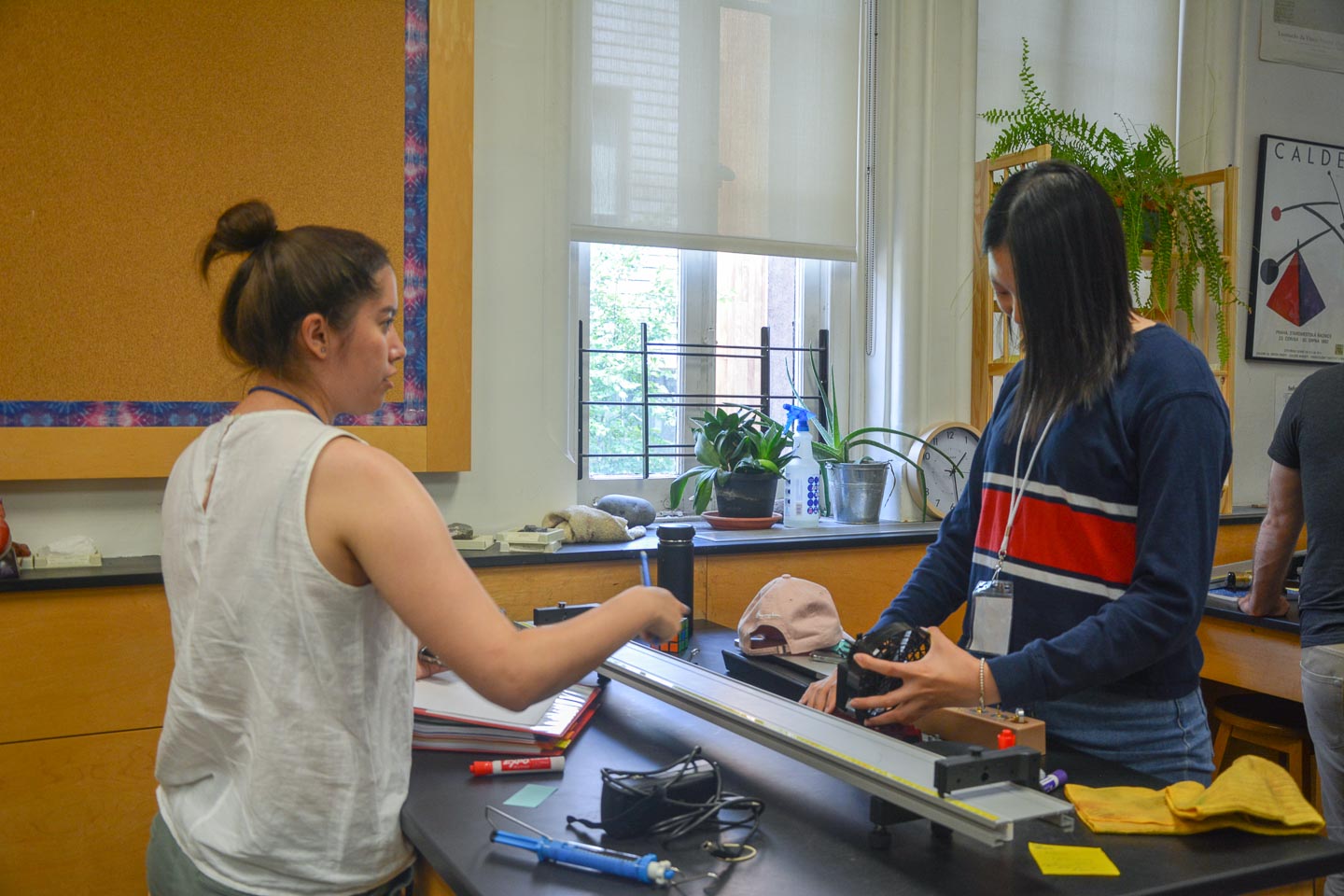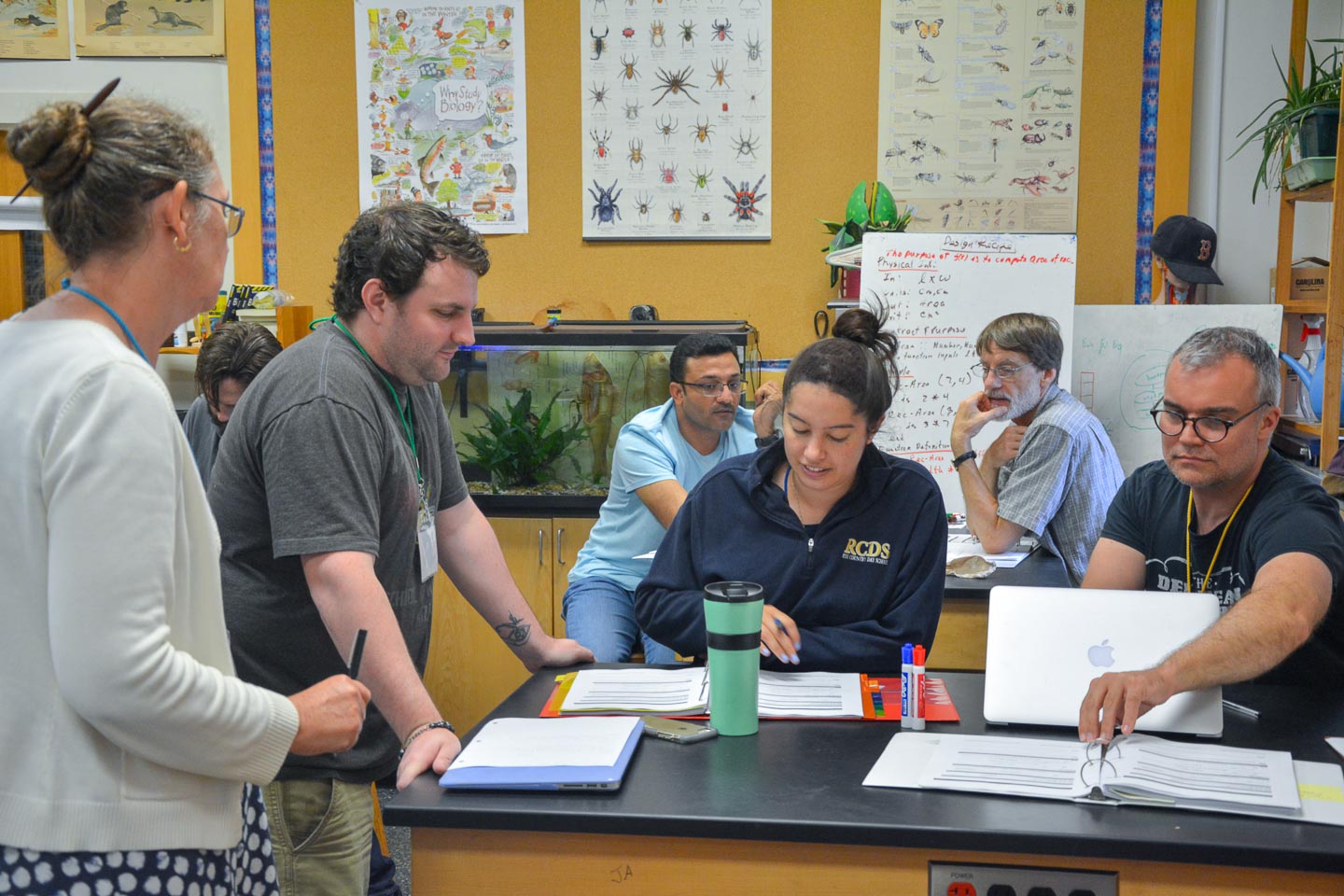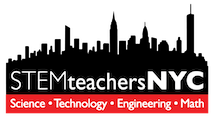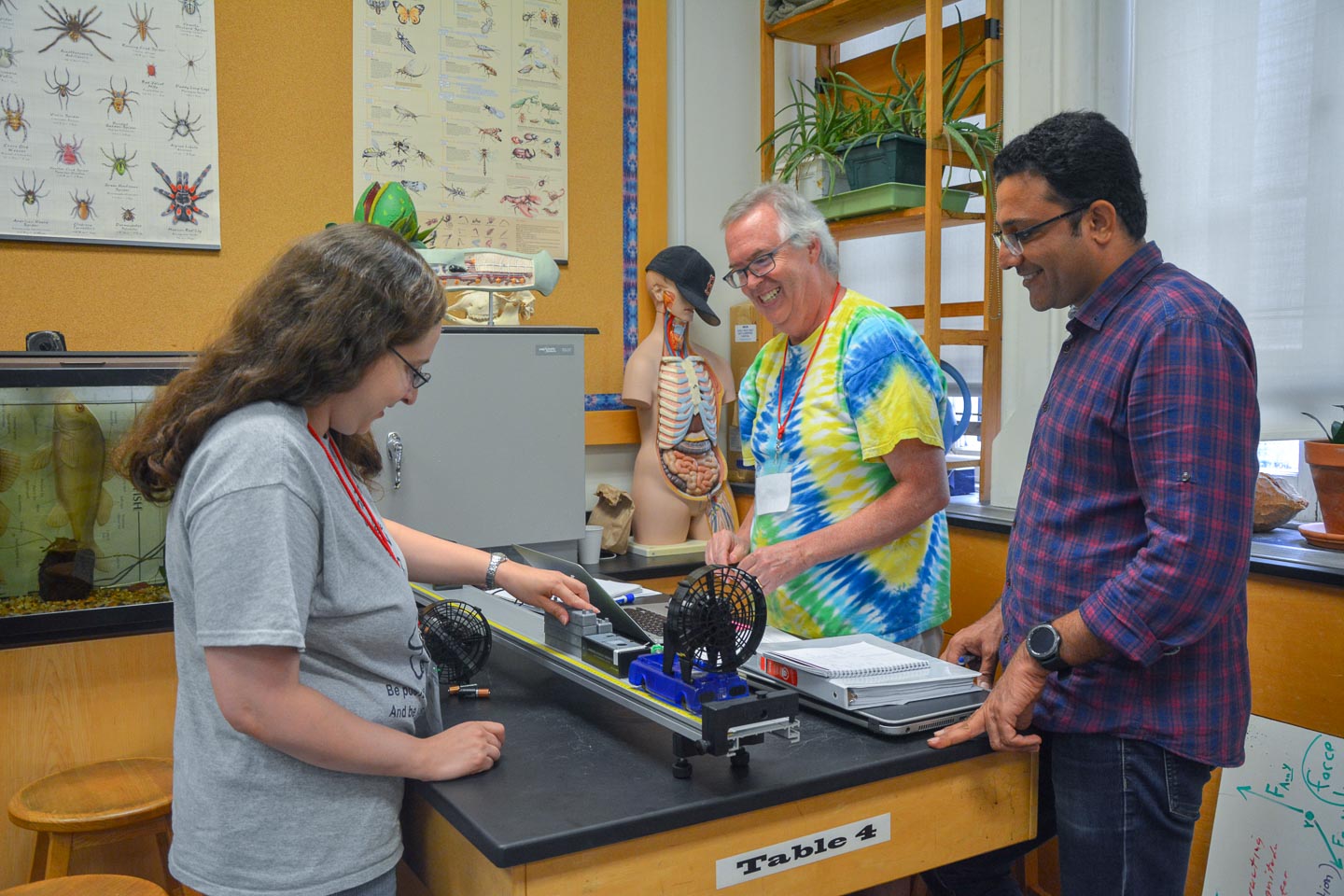By Cindy Yan | August 2018
This summer is special to me, Cindy Yan, a rising high school junior who was born in China and goes to school in California. I recently attended a workshop organized by STEMteachersNYC called Computational Modeling in Physics as an intern. As a student in a room of teachers, I gradually began to see teaching in a brand new way, and with a new lens. My experience in these three weeks has prompted some deep thoughts and challenges my understanding of education. I am more than grateful to be able to receive this opportunity and be a part of the workshop.
In this three-week workshop, a teaching strategy called modeling instruction[1] is combined with Pyret, a programming language designed for STEM education. Computer programming is a powerful tool to address physics problems that are difficult to translate into lab activities in most classroom settings. To start off the workshop, we worked in student-mode to define energy based on our observation of objects moving because of their interaction with each other. Every time when we finished doing a lab, we presented our work on whiteboards in small groups. Afterward, we compared everyone else’s work with our own and discussed. Finally, we ended our topic with worksheets or real-life problems. This included making predictions based on some mathematical relationship we concluded from the labs. These are significant phases of the modeling cycle, where students learn to collaborate with each other as well as learn to become more independent in their studies.
What was unique in this workshop, was the way in which we used the Pyret language to develop computer simulations based on our understanding of basic physics concepts and how they work. For instance, we learned to represent physics problems in the forms of energy bar charts, pie charts, LOL diagrams, state diagrams, and many more. These ways of representing helped me to understand problems more thoroughly and actually cleared many of my leftover confusion from my physics class this previous school year. We also did fun activities in Pyret such as mini golf, air hockey, and ball games. The great power of computer programing not only makes physics easier and more interesting to learn but also deepens our knowledge of physics concepts gradually.

Before I attended the workshop and read the article published by the Arizona State University on modeling, I had no idea what modeling was. This word is often associated with several completely different definitions, and I did not know this one associated with education actually existed. After reading the article, I got a basic understanding of this special style of teaching and saw how it stands out from all teaching styles. I believed I was a “pro” after reading the article and started to use the terms modeling and models without much thinking. However, as I started to participate and engage in the workshop, I, together with all other participants, believed that “models” is not the best term to address this technique. Instead, we reached consensus after discussions that “representations” is a better word since “model” can be very confusing to someone who is not familiar with it. Quoting from Josh Rutberg, one of the leaders of this workshop, “a computer is one way to represent a model, but a computer program is not the model itself; the same way, an equation or a graph is not the model but merely a part of it.” By using the term modeling and teaching it, what we actually mean is to use multiple representations to approach a single physics phenomenon.
One thing that really got my attention is the idea that computers never lie. They do not have the ability to guess either, so all they do is follow humans’ instructions and process the codes. Even though this might be frustrating to beginners at first and cause them to dislike the program, computers actually prove their worth in this process. I learned that error messages are the most valuable because they point out my mistakes instead of hiding my mistakes for me. As I became more comfortable getting error messages, I started to call them “feedback” instead of “errors.” It is the feedback that pushes me to go forward and brings my skills up to another level. In addition, computer simulations are a very significant tool since it shows images or motion and appeals to our visual senses. A confusing problem can get very clear after the computer visualizes the problem through Pyret simulations.

This is such a unique experience for me because I have never imagined what the “teacher world” is like before. From my conversation with these participants, I feel honored to be able to participate and start to appreciate teachers more. I understood that there is a hidden contract that teachers refer to when students believe that hearing what the teacher says, memorizing it, and answering it when being asked to make them good students. On contrary, teachers really hope their students learn what is implied and are able to ask further questions. Quoting some teachers’ words, “questions are more valuable than the answers themselves.” I was so glad to see a room full of supportive teachers who decided to attend the workshop in summer instead of going on vacation because of their love of teaching. I could tell that the teachers are learning a lot from each other through collaborations and conversations. Just like what STEMteachersNYC advocates, the workshops are “for teachers, by teachers, for teaching.”
Sources:
[1] https://files.eric.ed.gov/fulltext/EJ851867.pdf

